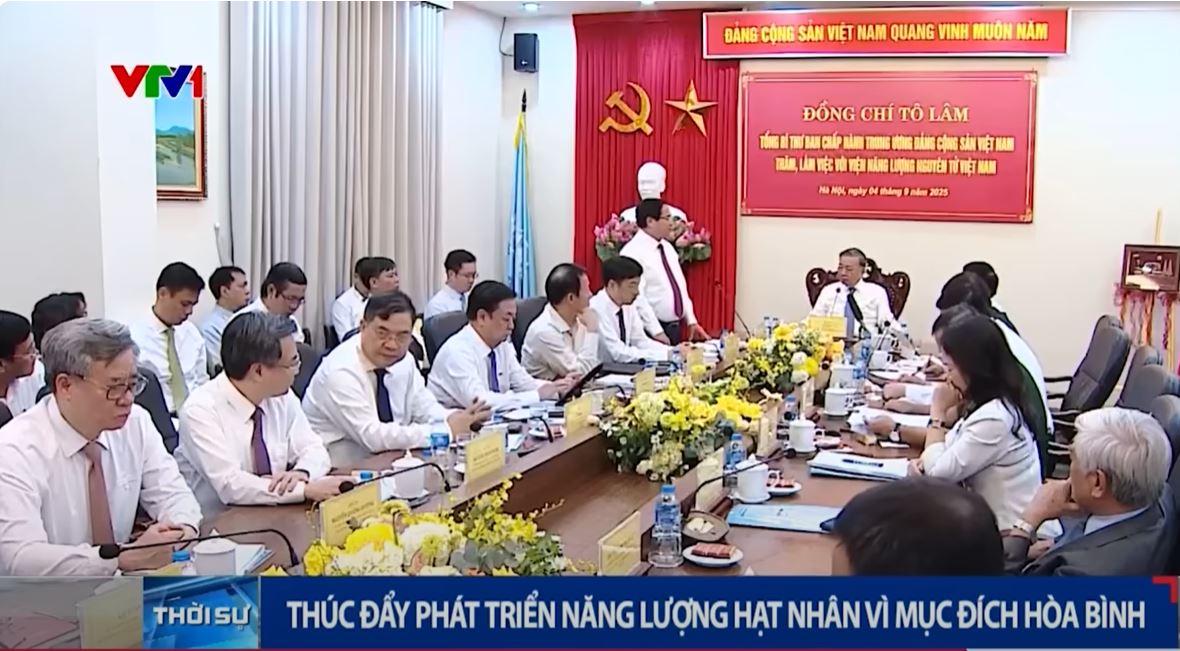- Hợp tác - Đào tạo
- Đào tạo
Bài giảng vật lý chuyên sâu
Viện KHKTHN tiếp tục tiến hành chương trình các bài giảng nâng cao trình độ chuyên môn về Vật Lý Hạt Nhân cho cán bộ nghiên cứu, sinh viên, nghiên cứu sinh chuyên ngành vật lý hạt nhân. Chuyên đề lần này tập trung vào các hiệu ứng spin đồng vị trong cấu trúc và phản ứng hạt nhân.
1) GS. Yoshitaka Fujita (Department of Physics, Osaka University, Japan)
Isospin Symmetry for a Deeper Understanding of Nuclear Excitations
Abstract: A nucleus is a very unique quantum-many-body system in which three fundamental interactions, i.e., ``strong"", ``weak"" and ``electromagnetic"" interactions, are active. Usually, we study nuclear excitations through the study of transitions caused by one of these interactions. It is discussed that a deeper understanding of nuclear response will be available by combining the information given by these three interactions through the idea of isospin symmetry. I will stress that such combined analysis is effective for the study of spin-isospin response of nuclei, especially of the Gamow-Teller response, which plays an important role under various stellar conditions.
2) GS. Gianluca Colo (Department of Physics, University of Milan, Italy)
Isospin Aspects in Nuclear Structure
Abstract: the concept of isotopic spin, or isospin, was introduced by Heisenberg long ago. It usefulness stems from the fact that the strong nuclear force, in first approximation, commutes with isospin. However, this symmetry is broken either by small physical interaction terms (ultimately, of electromagmnetic origin) or, within theory, by some spuriosity introduced by the approximations made in solving the many-body problem. The analysis of the isospin symmetry and its breaking has a deep impact on our understanding of the nuclear systems, and carries us to consider faraway problems like the unitarity of the weak interaction matrix or the impact of the symmetry energy term on the stability of neutron stars. In these lectures, we will touch upon the problem of the isospin degree of freedom in nuclear structure (by considering the ground state and the vibrational states of medium-heavy nuclei as examples), and the isovector part of the nuclear Hamiltonian. We will use as theoretical tools mean field methods based on effectiveHamiltonians containing the Skyrme effective force. The lectures will be as much as possible self-contained.
3) TS. Đào Tiến Khoa (Viện Khoa Học và Kỹ Thuật Hạt Nhân, Hà Nội)
Probing the Nuclear Symmetry Energy
Abstract: the charge exchange(p,n) reaction is well known as an effective tool to excite the isobaric analog of the target ground state. Such an isobaric analog state (IAS) has essentially the same structure as the ground state of the target except for the replacement of a neutron by a proton and, hence, differs in energy approximately by the Coulomb energy of the added proton. In the isospin representation these states are just two members of the isospin multiplet which differ only in the orientation of the isospin. The similarity of the initial and final states of the (p,n) reaction makes this reaction very much like an elastic scattering in which the isospin of the incident proton is``flipped". In such an approximation, the (p,n) reaction exciting the IAS can be described quite accurately by the isospin dependent part of the proton-nucleus optical potential. With the isospin dependence of the effective NN interaction fine tuned to reproduce the charge exchange (p,n) data, realistic estimate of the symmetry energy has been made based on the Hartree-Fock calculation of asymmetric nuclear matter using the same effective NN interaction.
Thời gian: Bắt đầu lớp học: 9h sáng Thứ ba ngày 5/9/2006
Kết thúc lớp học: 16h chiều Thứ tư ngày 6/9/2006
Địa điểm: Hội trường mới Viện Khoa Học & Kỹ Thuật Hạt Nhân
Đường Hoàng Quốc Việt, Nghĩa Đô, Hà Nội.
Lớp học sẽ hỗ trợ tiền ăn trưa, đi lại trong 2 ngày cho các học viên và tổ chức một tiệc tối giao lưu giữa các giảng viên và học viên.
Xin mời tất cả các bạn sinh viên, các đồng nghiệp quan tâm tham dự đăng ký ngay với ban tổ chức qua E-mail: dccuong@mail.vaec.gov.vn, chungxl@yahoo.com
Viện Khoa học và Kỹ thuật hạt nhân




.png)







